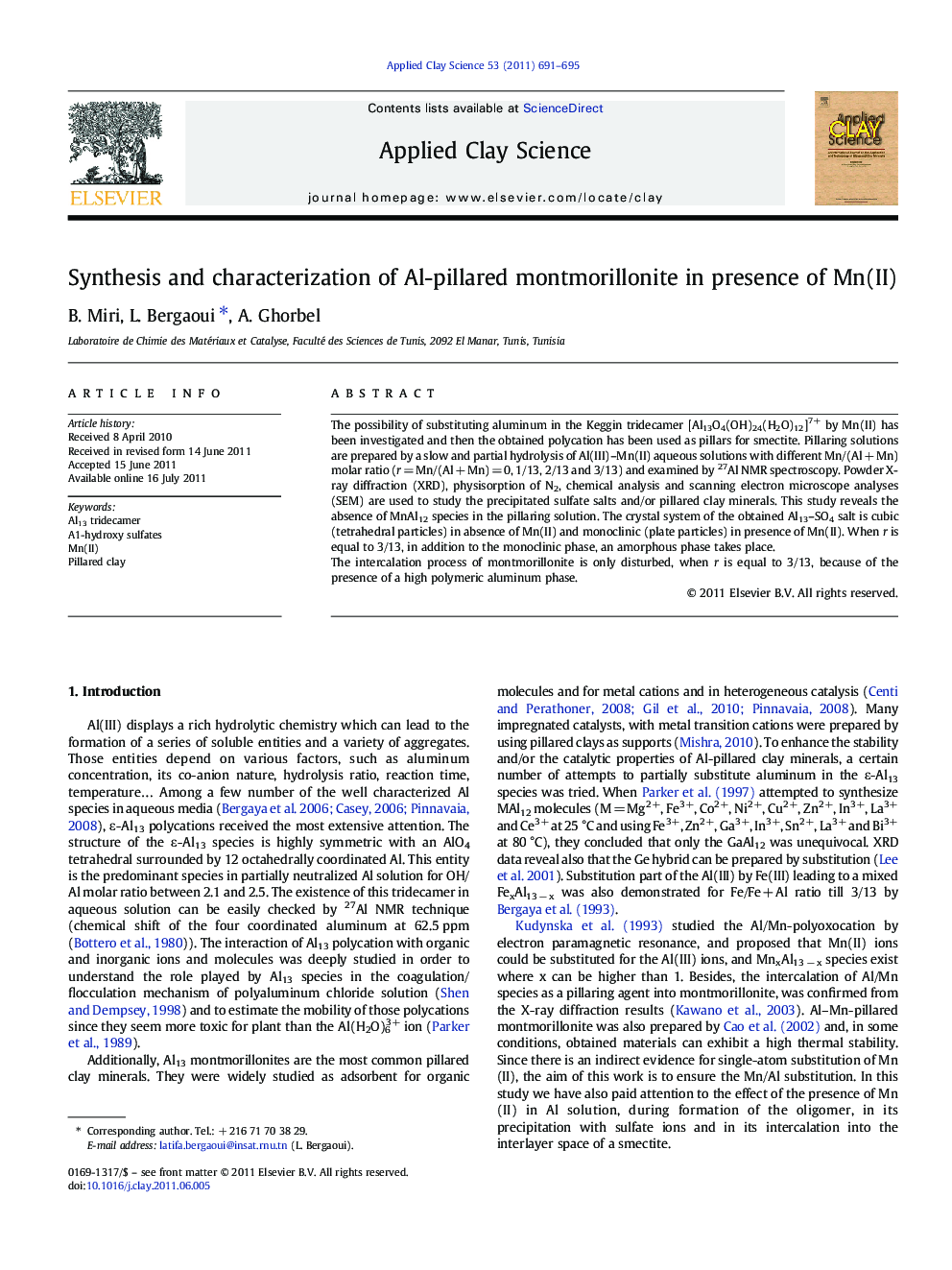| Article ID | Journal | Published Year | Pages | File Type |
|---|---|---|---|---|
| 1695428 | Applied Clay Science | 2011 | 5 Pages |
The possibility of substituting aluminum in the Keggin tridecamer [Al13O4(OH)24(H2O)12]7+ by Mn(II) has been investigated and then the obtained polycation has been used as pillars for smectite. Pillaring solutions are prepared by a slow and partial hydrolysis of Al(III)–Mn(II) aqueous solutions with different Mn/(Al + Mn) molar ratio (r = Mn/(Al + Mn) = 0, 1/13, 2/13 and 3/13) and examined by 27Al NMR spectroscopy. Powder X-ray diffraction (XRD), physisorption of N2, chemical analysis and scanning electron microscope analyses (SEM) are used to study the precipitated sulfate salts and/or pillared clay minerals. This study reveals the absence of MnAl12 species in the pillaring solution. The crystal system of the obtained Al13–SO4 salt is cubic (tetrahedral particles) in absence of Mn(II) and monoclinic (plate particles) in presence of Mn(II). When r is equal to 3/13, in addition to the monoclinic phase, an amorphous phase takes place.The intercalation process of montmorillonite is only disturbed, when r is equal to 3/13, because of the presence of a high polymeric aluminum phase.
► Slow and partial hydrolysis of Al(III)-Mn(II) aqueous solutions. ► MnAl12 polycation Keggin species are not evident. ► Formation of SO4-Al13 with rectangular plaques morphology in presence of Mn2+. ► Pillaring operation was undisturbed by the presence of small amount of Mn. ► For Mn/(Mn + Al) = 3/13, obtained pillared montmorillonite have low surface area.
